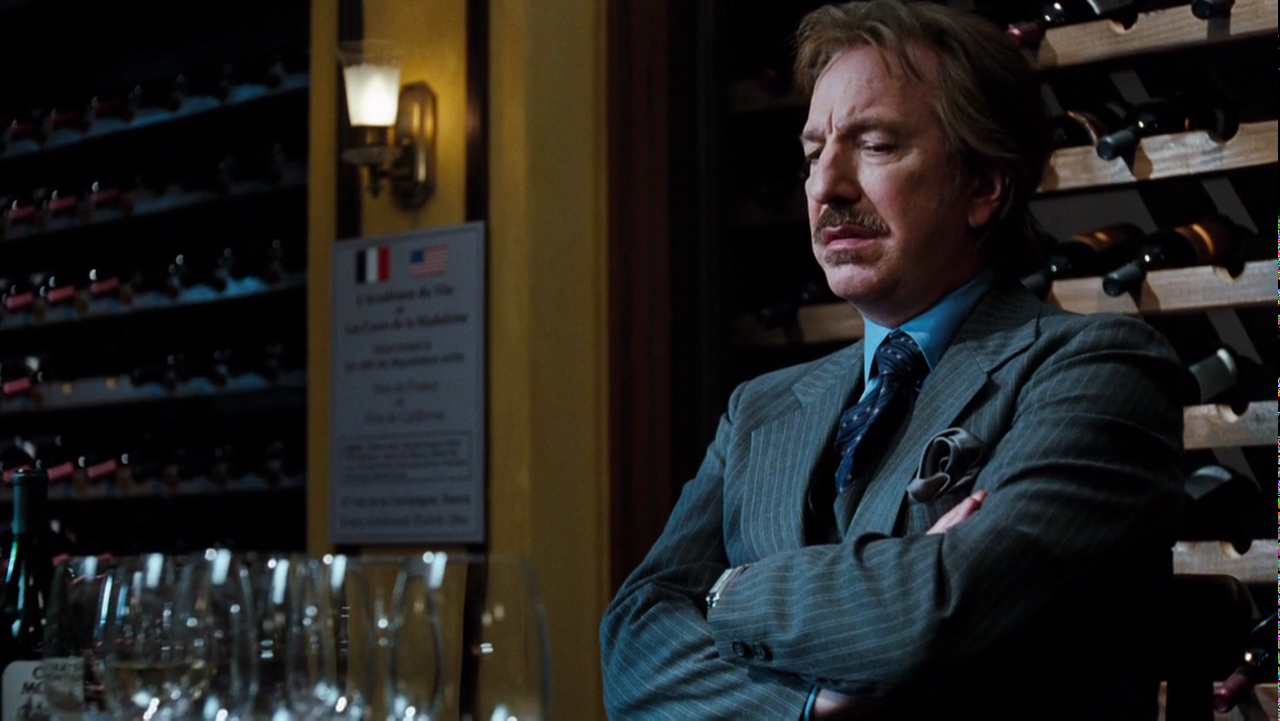Grading Wine: What is the 100-Point System?

If you purchase wine regularly, you’ve probably come across “shelf talkers,” the laminated tags displayed with wine that often include a review from a prominent magazine or critic such as Wine Spectator magazine or Robert Parker. The review typically contains a few sentences describing and appraising the wine, followed by a drinking window (“Drink now” vs. “Drink 2017 through 2020,” etc.) and a score from 1 to 100.
I’ve had many customers ask me for a “90 point wine,” refuse to purchase a wine under a certain score, and ask me why I’m recommending “an 85 point wine” when there’s a “90 point wine” right next to it on the shelf. This concerns me because while the 100-point system can certainly be a useful tool, it’s neither objective nor necessarily consistent. There are several things to know about how wine is scored before you make a purchasing decision based on a point value.
The first thing to understand about the 100-point system is that it’s actually more of a twenty-point system. A wine gets 50 points just for being wine (much like the 100-point grading system most of us used in school, where anything under maybe 60 is a failing grade) and no respectable winery will publish a score under 80 points as promotional material, though the publication giving the score usually will.*
Beyond that, in theory, the wine accrues points for each of the four factors we look at when we evaluate a wine: color/appearance, nose/bouquet/aroma (smell), palate (taste and structure), and overall impression.
An explanatory video by wine critic James Suckling illustrates just how arbitrary this system can be—despite efforts to tout it as otherwise.
Color and appearance, for example, are really only examined critically to look for floating sediment, cloudiness, or other solid signs of possible damage or age; either those qualities are present or they’re not. So why is color “13 points” in the video example? Does that mean he likes the color? Does it mean he’d paint his bathroom that color?
And so it goes.
The more you learn about wine, the more you begin to realize that wine scores are as subjective as the palates of the critics giving them. Some critics and publications are more respected than others, so not all scores should be weighed equally. Establishments and bloggers that publish decent scores in exchange for money certainly exist. Some critics are known for accuracy with certain regions, but are less trustworthy outside their wheelhouse. Some critics are particularly hard—or easy—on certain styles. Critic Robert Parker has become so known for giving big scores to big, fruity, high-alcohol wines that the term “Parkerization” was coined to describe his influence on wine styles around the world.
The world’s top wine critics have the perspective and experience of years and years of tasting, but they’re still people, and it’s more accurate to consider their score an expert opinion on where a wine falls among its peers than a judgement about whether you’ll like it.
Wine critics are typically assigned a “beat,” like reporters, so they’re not expected to judge a New Zealand sauvignon blanc and a first-growth Bordeaux on the same morning or against each other. When they go to work, they typically know what category (region and/or varietal) of wine they’ll be tasting, though it’s customary for them to taste blind in the sense that they don’t know the producer before giving the wine a score. That means a critic who gives 87 points to an Albariño isn’t judging it against every wine he’s ever had in his life—just against its peers.
With all this variation, is the 100-point system useful at all? I know many wine writers who refuse to give scores, and I sympathize with them completely. Scores are useful when you know how to interpret them, but they can also be confusing and even misleading for people who don’t.
When friends ask me for advice I’ve always told them to gradually look for a critic or wine journalist whose tastes seem to mirror their own, and just follow that person’s writing. I have two prominent critics whose palates I trust enough to make purchases based on their recommendations, and that’s worked well for me.
It’s also important to remember that just because a wine on a store shelf has no published score taped next to it doesn’t mean it scored poorly. Many wineries don’t print shelf talkers or can’t distribute them to every store; others don’t send samples into reviewers for scoring at all. If you’re curious about a score, googling the wine (don’t forget the vintage) may yield results, though some publications keep their reviews behind paywalls; searching the wine in a database like Cellartracker will give you Rotten Tomatoes-style general public reviews that can be quite helpful.
As for me, I find numbers about as sexy in the experience of wine tasting as giving a numerical score to my favorite band performing live. But if you ask me what score I’d give a wine I’m enjoying, I could tell you, roughly, within a few seconds, because I was trained to mentally score wines simply to quantify and put in perspective my experience of drinking them.
Based closely on Wine Spectator’s guidelines, here’s how a sommelier friend taught me to think about it:
Under 80 points means there’s something critically flawed about the wine.
80 to 84 points means, “Not bad. I’ll drink it if it’s there, but I wouldn’t seek it out.”
85 to 89 points means, “Mmm, this is good!”
90 to 94 points means, “This is delicious. I want to know more about it.”
and 95 to 100 points is what we call “classic.” That means, “This wine is the best example of its style,” but also, “I’ll remember this wine for years to come.”
If you think this system sounds especially subjective, you’re not wrong—especially about that last number, which is the center of unending controversy in the wine world.
The way it was explained to me, you can’t tell someone else what will be a 100-point wine for them. It is an emotional experience, as much as music or art or dance. I knew the first time I had one the way I knew every time I’ve ever been in love. Instead of wanting to talk about it, I felt the world closing like a curtain around me as I soaked in the wine, letting it have its way with me. When the discussion came around to me and it was my turn to read my notes, I said, “I don’t know or care what this wine tastes like. I just want to be alone with it.”
That’s when I knew I had my first 100-pointer.
Some wine drinkers and writers feel that the 100-point score should only be given when the critic feels that total emotional shock wave. Others disagree. Robert Parker, who readily admits that at the highest scoring levels the only variable is the taster’s emotion, recently declared that it was “irresponsible” for wine critics to avoid giving 100-point scores to what they feel are the best examples of every style they taste.
“When, in your mind, the wine is the best example you have ever tasted of this particular wine, you have an obligation to give it a perfect score,” he told The Drinks Business. In Parker’s mind, a critic’s job is to know what the perfect example of a style of wine would be, and rank accordingly when it comes along.
Age comes into play, too. Because Robert Parker’s system holds that the final 10 points in a wine score reflect a wine’s ability to age, winemaker Heidi Barrett has said she considers a 90-point score for a wine meant to be consumed young and fresh to be as good as a 100-point score for an ageworthy wine.
Wine scores are an attempt to work within a slew of variables, and in the end they make most sense to me as a guide, rather than the last-word authority they’ve become. Whether you personally will enjoy a wine may have very little to do with how well it does what it’s ostensibly supposed to do.
Let’s say I spend six months on a tough workout regimen and get in the best shape of my life. I get my hair and makeup done by the best stylist I can afford. I save up to buy an amazing garment that suits my body type perfectly, and I go to an old friend’s wedding. I’m happy to see all my friends, and I’m glowing from the inside out.
I might look the best I ever have. I might be perfect that day. But I’ll never look like Natalie Dormer or Beyoncé or Charlize Theron, not in a million years, no matter what I do. To borrow an analogy from My Best Friend’s Wedding, jello can never be crème brûlée.
So on that day, in that moment, am I a 100-point me? Or am I a 95-point me, because I’m great for what I am but I’ll never be Queen Bey? Am I a 90-point me, because my look isn’t likely to last given my penchants for sunbathing and hedonism? Should we split the difference?
I say, it depends who’s looking.
*When a reviewing publication declines to publish a score or review because the product or establishment being reviewed is especially bad, this is known as a “mercy rule.” It’s common among local and regional publications (because such media generally take an upbeat, positive tone, and because they rely on local business for their advertising dollars and don’t want to be seen as bullying any potential clients) but frowned upon for the most respected and established critics.
Featured Image: Alan Rickman in Bottle Shock (Unclaimed Freight productions)




